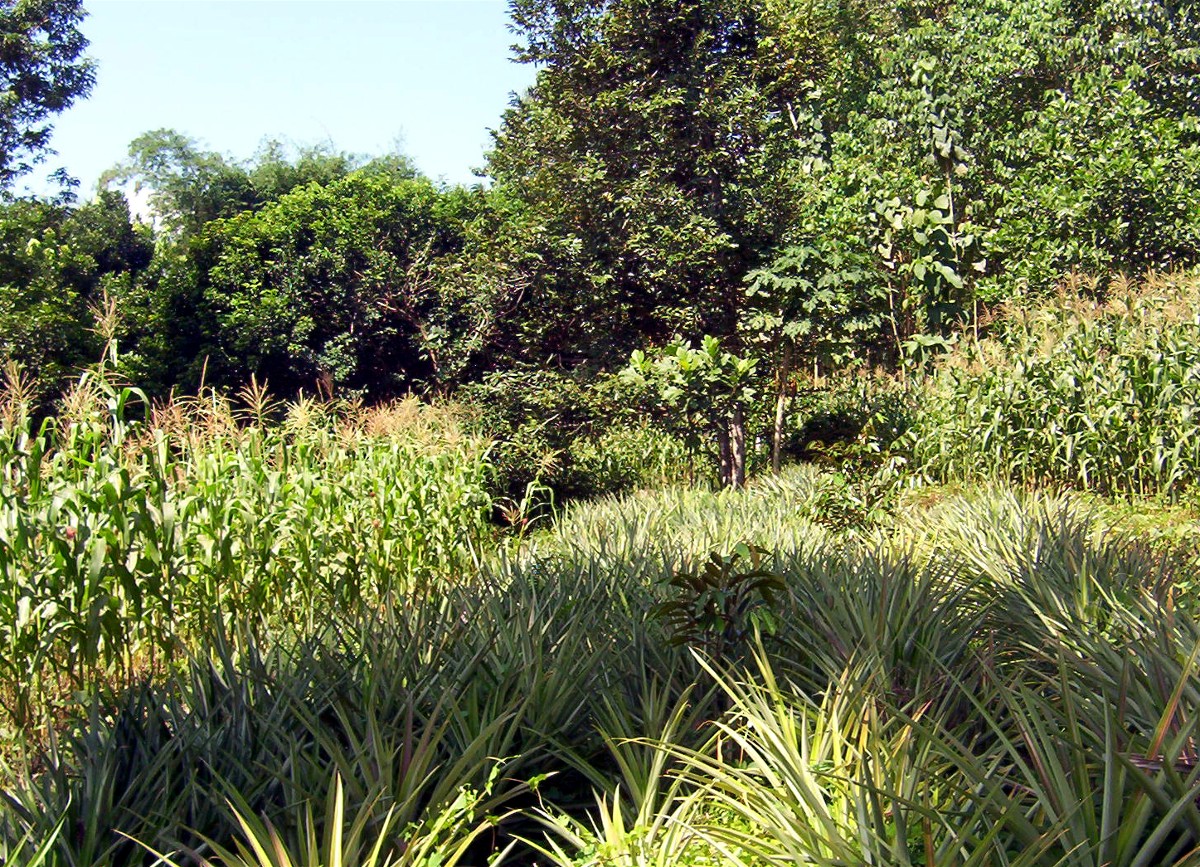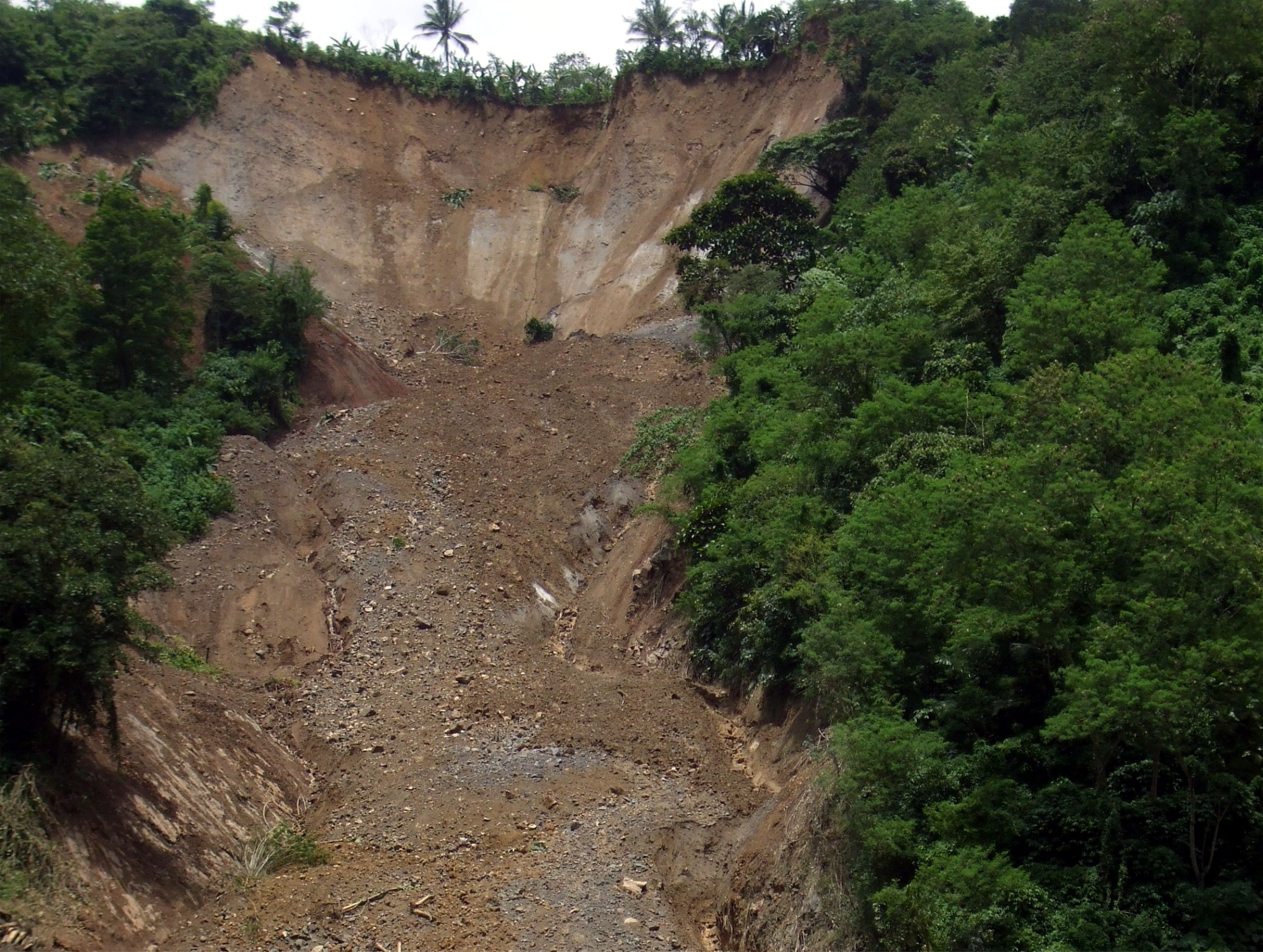Text and Photos by Henrylito D. Tacio
Filipino farmers can help offset the effects of climate change by planting trees in their farms. Such was the recommendation of a top official of a non-government organization based in barangay Kinuskusan, in Bansalan, Davao del Sur.
“Trees play a crucial role in the fight against global heating, which is caused by burning fossil fuels that release carbon dioxide and other greenhouse gases,” says Jethro P. Adang, director of the Mindanao Baptist Rural Life Center (MBRLC) Foundation, Inc.
This is made possible through photosynthesis. By such a process, trees absorb carbon dioxide, then store the carbon and emit pure oxygen. Experts call this phenomenon carbon sequestration.
“Carbon is stored in the leaves, stems, and other parts of plants when they absorb carbon dioxide from the atmosphere and use it to grow,” explains the United States Department of Agriculture (USDA). “Trees are very important for carbon sequestration because they live a long time and, therefore, store their carbon for many years.”
Carbon dioxide is an important heat-trapping (greenhouse) gas, which is released through human activities such as deforestation and burning fossil fuels. “Human activities have raised atmospheric concentrations of carbon dioxide by nearly 49%,” the Global Climate Change of the US National Aeronautics and Space Administration (NASA) reports.
The World Future Council said agriculture is “directly responsible” for 14% of total greenhouse gas emissions. On the other hand, deforestation accounts for an additional 18% of emissions.
A study done by the Department of Environment and Natural Resources (DENR) showed that a single mature tree could absorb carbon dioxide at a rate of 21 kilograms a year and release enough oxygen back into the atmosphere to support two persons. About 1.5 tons of carbon dioxide are removed, and 1.07 tons of life-giving oxygen are produced for every ton of newly grown trees.
In that case, then SALT 3 – or Sustainable Agroforest Land Technology – can be a possible solution to the problem. “It’s a small-scale reforestation integrated with food production,” explains Adang. “Sixty percent of the two-hectare farm is devoted to forestry while the remaining 40% is allotted to agriculture.”
SALT is a definitive example of agroforestry. In the broadest sense, agroforestry is “trees plus any other crops” or “the combining of trees with food crops.” MBRLC calls it a “wood + food scheme.”
Prof. Napoleon T. Vergara of the East-West Center in Hawaii regarded agroforestry as a form of land use that has a high potential to simultaneously satisfy three important, sometimes conflicting, objectives: protecting and stabilizing the ecosystem, producing high levels of inputs of economic goods (food, fuel, small timber, fodder, organic fertilizer) on a sustainable basis, and providing stable employment, improved income, and basic materials to rural populations.
According to Adang, SALT 3 is the center’s answer to the rapid disappearance of the country’s forest cover. “Out of nearly 15 million hectares of classified forest land in the country, more than 5 million hectares are already categorized as badly denuded and much of the remainder is in various stages of denudation,” he says.
In the demonstration SALT 3 farm located at the MBRLC, one hectare is planted to several agricultural crops. Following the original SALT method, different nitrogen-fixing trees and shrubs (like the local “ipil-ipil” and “kakawate” and introduced species such as Flemingia macrophylla, Desmodium rensonii, and Indigofera anil) are planted in double rows, following their natural contour.
“The principle of SALT is the same as that used by the Ifugao tribes in Mountain Province,” Adang explains. “All we are doing is using various nitrogen fixing trees and shrubs instead of rocks.”
When the rows of vegetation are 1.5 to 2 meters tall, they are cut back to about 40 centimeters, and the tops are piled in the 3- to 5-meter alleys, where agricultural crops are growing. “The leaves of the shrubs make very good nitrogen-rich fertilizer and also add organic matter to the soil,” Adang points out.
In the SALT scheme, you find a mix of permanent crops, cereals, and vegetables. Every third strip of available land is normally devoted to permanent crops like cacao and coffee. A combination of various cereals (corn, upland rice, and sorghum) and vegetables (string beans, cucumber, squash, etc.) are planted on the remaining two strips.
In this kind of farming, crop rotation is recommended. For instance, the strips planted with cereals earlier are to be planted with peanuts or winged beans in the next cropping. “Crop rotation helps to preserve the regenerative properties of the soil and avoid the problems of infertility typical of traditional agricultural practices,” Adang says.
Multistory cropping may also be practiced (planting black pepper, corn, and lanzones together in one hedge). In waterlogged areas, gabi, kangkong, and other water-loving crops are planted together. “We all do these to make use of all the available spaces of the farm,” Adang says.
“Some of the crops should be planted to feed the farmer’s family, while other crops are grown for sale, so family income is well spread out over the season,” says Adang. “Every week or every month, there’s always something to harvest. The system can, in fact, raise the family income threefold.”
One foreign consultant who came to see the agricultural component commented: “The system provides great stability (in both economic and ecological terms) and appears to conserve soil very well in the process of growing useful plants.”
The crops are planted only at the lower portion of the two-hectare farm. This is the area where the farmer can concentrate farming as years go by. He can also build his house in a portion where he can construct a fishpond and his vegetable garden.
Harold R. Watson, the first director of the center and recipient of the Ramon Magsaysay Award for international understanding, admitted that SALT is not a perfect farming system. “There is not and never will be one system for all farmers,” stressed the American missionary who’s now retired and back in his birthplace in Mississippi. “SALT is not a miracle nor a panacea. There is no easy way. It takes three to ten years to deplete the soil of nutrients and lose the topsoil; no system can bring depleted, eroded soil back into production in a few short years.”
Meanwhile, the upper portion of the two-hectare SALT 3 farm is planted to different trees; recommended species are those native in the place.


In tree planting, Adang talked about “tree time zones” of 1-5, 6-10, 11-15, and 16-20 years, within which progressively more valuable products are harvested. Some very valuable trees could be left longer, and he dubs this “the grandchildren project.” “Plant trees not for yourself but rather for your grandchildren,” he says.
Among the trees planted in the SALT 3 model farm are Sesbania sesban, “ipil-ipil,” Acacia auriculiformis and A. mangium, Swietenia macrophylla, and Pterocarpus indicus (more popularly known as narra). Some of these are planted basically for fuelwood, while others are for furniture purposes.
Samanea saman (raintree or commonly called “acacia”) falls under the 16- to 20-year time zone. While waiting, rattan may be planted below the trees.
To segregate the agricultural crops from trees, giant bamboo is planted down the center. “Bamboo helps protect the soil from eroding to agricultural crops,” Adang says.
Although it was launched in 1988, SALT 3 has not caught the attention of farmers and policymakers. “I really don’t know,” Adang says. “It may be because farmers are not interested in planting trees in their farms. Or they really don’t know that such technology already exists. Or we are not pushing for it enough.”
As for policymakers, Adang says, “I don’t have any idea either. Maybe, they have other more urgent laws to make. Or, just like the farmers, they may not have heard of SALT 3.”
But with the problem of climate change, deforestation, soil erosion, drought, food insecurity, and other catastrophes, there is a need to push SALT 3 in the rural areas.
In 1991, the MBRLC was recognized by the UN Food and Agriculture Organization with a World Food Day Silver Medal “in recognition of the contribution to mobilizing people’s participation in tree planting and sustainable forest resources management.”
“Only when the last tree has been cut, the last river poisoned, and the last fish caught will we realize we can’t eat money,” so goes a Native American proverb.

